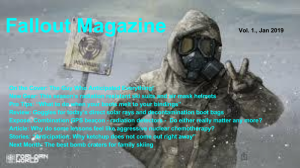L&Airc, I appreciate knife throwing as a keen example. “Be” the knife or let the knife be an extension of you and feel the direction in which “you” wish to travel. See in your mind’s eye you (the knife) hitting its target and let that vision instigate a feeling that is facilitated through the action of throwing the knife. Thinking will only disrupt this pattern. Sometimes I think of developing patterns through the concept of addiction. If a feeling is rewarding to our pleasure center, we automatically enter a development process of both chasing more and more of that feeling, improving that feeling to a “higher” degree as well as to develop the facilities we use to access that feeling. When I make a powerful, clean, well balanced and effective turn it creates a feeling that stabs into my pleasure center. I then allow the automatic process of addiction to run rampant in my system and grooving out a trench (well defined kinetic path) in my neural pathways. I have been clean and sober since March but, by fall, the white knuckling starts to become too much. I tell people: “My boss fired me, my house was taken by the bank, my wife divorced me, child services took away my kids, my dog ran away, my hamster died in the wall and my goldfish went belly up … usually every November.”

For me, an example of a benefit of feeling vs. thinking is the differences of “thinking” anticipatorily and “feeling” anticipatorily. While we may not be able to think at the speed of skiing, we certainly can “feel” at the speed of skiing as they are one in the same. The ability to anticipate accurately, quickly and thoroughly is a core facet of ability. Especially regarding an ability to relegate anticipatory needs in the intuitive state. The better a skier is, the more they ski with intent and purpose, both of which rely explicitly on anticipation. In turn, the development of intuitive anticipation relies on the maniacal repetition of intent. Even our quick jerk reactions rely on unconscious anticipation that is organized in nanoseconds. Think of “feeling anticipatorily” as an intuitive funnel that concentrates all a skier's experience, ability and knowledge crossed with a streaming visual and ski feedback into immediate action to meet the present forces of a turn at hand.
I also think of anticipation as “indirect intent” and one that keeps you loose and ready or in a constant state of pliability with which to tackle the upcoming variances of forces needed and the ability to adjust to them in tenths of seconds without accessing the cerebellum (thoughts) at all. When we use our upper bodies to transmit a “direct intent” to our feet and skis, it is through a higher rate of muscular contractions, the sustained directive of which causes the loss of a certain measure of separation ability that requires relaxation of the muscles and we are trapping our upper bodies with both directive and reactionary responsibilities that can be more competently managed by the lower regions and the feet. Once a skier reaches a high skill level of upper/lower body separation, they find that the upper body is far less monopolized with reactionary responsibilities and retains a higher measure of anticipatory ability. An upper body with the quiet confidence of a relaxation born stillness of the CoM can better focus more on the path of least resistance that remains out ahead of the BoS no matter how steep, no matter how quick, no matter how fast we go. Anticipation is an element that can be seen as a vehicle to more evenly distribute the kinesis and our sensory capabilities throughout the turn.
In this regard, anticipation of the upper body can come in the form of angulation, inclination, rotation, flexion, extension, tipping and fore/aft/left/right pressure control. The goal for anticipation is the ability to meet the required upcomming and building forces with a well measured soft touch dose that is no more and no less than the force required. The main goal, effortlessness, becomes the benefactor of such a shrewd anticipatory economy. This “soft touch” is the progressivity of movement with which we allow anticipation take place.
I suppose that ski performance related anticipation can be divided into quite a number of subcategories such as technical/tactical, action/reaction, simultaneous/sequential, conscious/intuitive, cognitive/physical, micro/macro and so on. Right now, watching the news, I am macro anticipating a nuclear world war sparked between the US and North Korea which has me micro anticipating the best base prep and wax for skiing all the soft and supple beds of nuclear ash fallout we will have at our disposal. I further anticipate getting in a cover shot of the first edition of Fallout Magazine, a magazine still in its planning or, “anticipatory” stages:
